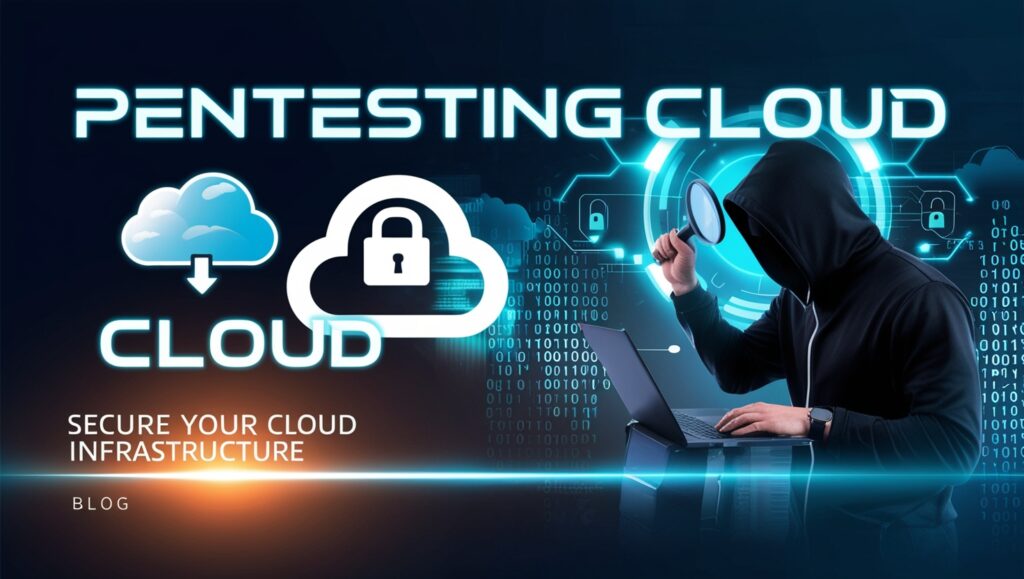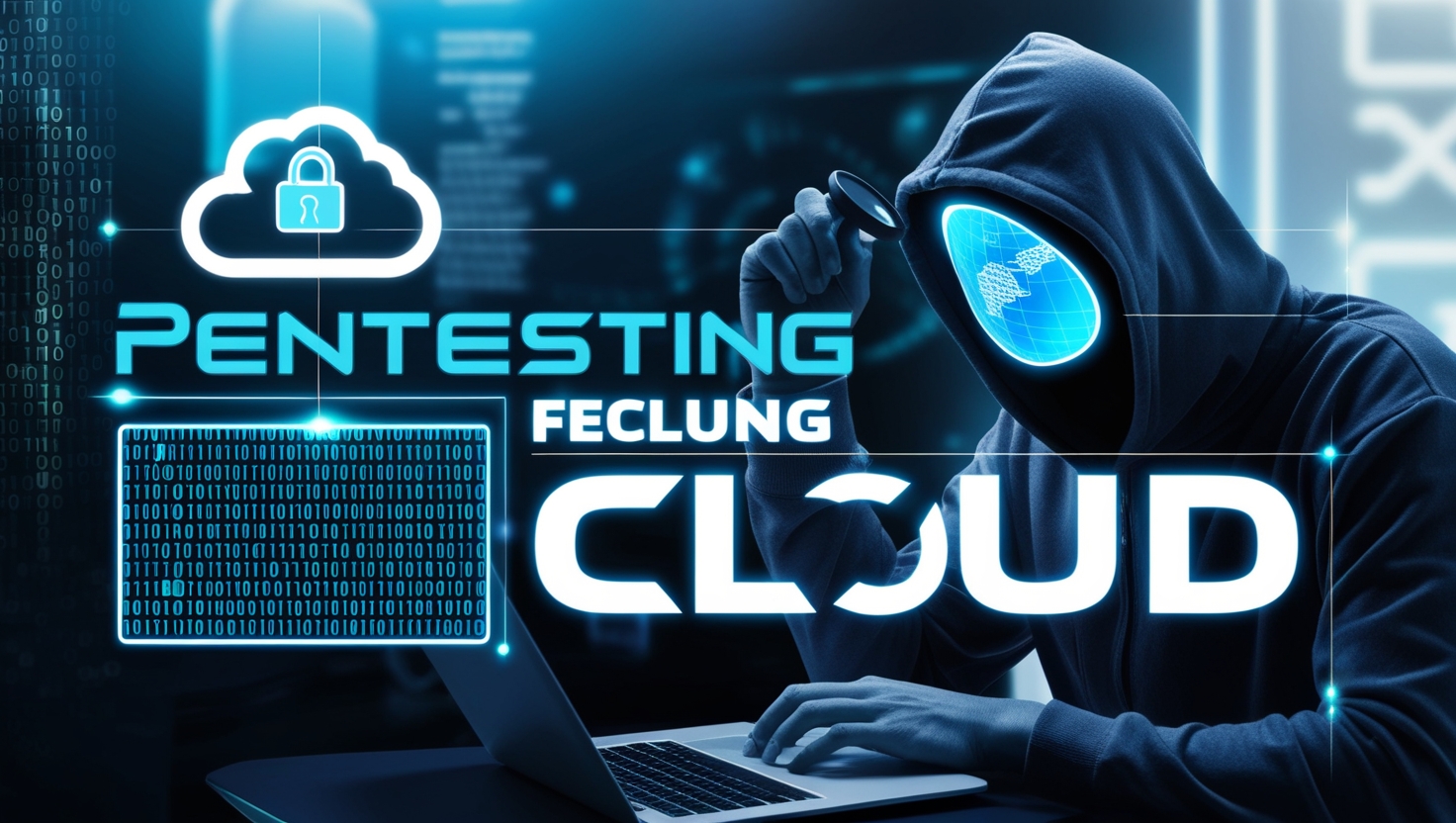In today’s digital era, businesses are rapidly migrating to the cloud for scalability, flexibility, and cost-efficiency. However, this shift also brings new security challenges. Pentesting Cloud environments has become a critical practice to identify vulnerabilities and ensure robust security. In this blog, we’ll explore everything you need to know about Pentesting Cloud, from its importance to tools, techniques, and best practices.

1. What is Cloud Penetration Testing?
Pentesting Cloud, or cloud penetration testing, is the process of simulating cyberattacks on cloud infrastructure to identify security weaknesses. Unlike traditional pentesting, which focuses on on-premises systems, Pentesting Cloud involves assessing cloud-based services, configurations, and APIs. The goal is to uncover vulnerabilities like misconfigurations, weak access controls, or exposed data before malicious actors can exploit them.
2. Why is Pentesting Cloud Environments Essential?
Cloud environments are inherently complex, with shared responsibilities between cloud providers and users. Pentesting Cloud is essential because:
- It helps identify misconfigurations that could lead to data breaches.
- It ensures compliance with industry regulations like GDPR, HIPAA, and PCI-DSS.
- It provides insights into the effectiveness of your cloud security measures.
- It helps prevent costly downtime and reputational damage caused by cyberattacks.
3. Top Cloud Security Vulnerabilities You Should Know
When performing Pentesting Cloud, you’ll often encounter these common vulnerabilities:
- Misconfigured Storage Buckets: Publicly accessible S3 buckets or Azure Blob Storage.
- Weak Identity and Access Management (IAM): Overprivileged users or roles.
- Insecure APIs: Poorly secured APIs that expose sensitive data.
- Lack of Encryption: Data transmitted or stored without encryption.
- Shadow IT: Unauthorized cloud services used by employees.
4. Traditional Pentesting vs. Cloud Pentesting: Key Differences
While traditional pentesting focuses on physical servers and networks, Pentesting Cloud involves unique challenges:
- Shared Responsibility Model: Cloud providers manage infrastructure security, while users secure their data and applications.
- Dynamic Environments: Cloud environments are highly scalable and constantly changing.
- API-Centric: Cloud services rely heavily on APIs, which require specialized testing.
- Global Accessibility: Cloud assets are accessible from anywhere, increasing the attack surface.
5. Popular Cloud Platforms for Pentesting: AWS, Azure, and GCP
The three major cloud platforms—AWS, Azure, and GCP—each have their own security features and challenges. Here’s how Pentesting Cloud applies to each:
- AWS: Focus on S3 bucket permissions, IAM policies, and EC2 instance security.
- Azure: Test for misconfigured Blob Storage, Azure AD roles, and virtual networks.
- GCP: Assess Google Cloud Storage, IAM roles, and Kubernetes configurations.
6. Must-Have Tools and Techniques for Cloud Pentesting
To effectively perform Pentesting Cloud, you’ll need the right tools and techniques:
- Tools:
- Nmap: For network scanning.
- Pacu: AWS-specific exploitation framework.
- CloudSploit: For automated cloud security assessments.
- OWASP ZAP: For API security testing.
- Techniques:
- Reconnaissance to map the cloud environment.
- Exploiting misconfigurations in storage and IAM.
- Testing for insecure APIs and endpoints.
7. Understanding the Shared Responsibility Model in Cloud Security
The shared responsibility model is a cornerstone of cloud security. In Pentesting Cloud, it’s crucial to understand:
- Cloud Provider Responsibilities: Securing physical infrastructure, hardware, and hypervisors.
- User Responsibilities: Securing data, applications, access controls, and configurations.
Failing to secure your side of the model can lead to severe vulnerabilities.
8. Step-by-Step Guide to Pentesting Cloud Infrastructure
Here’s a step-by-step approach to Pentesting Cloud:
- Planning: Define the scope, objectives, and rules of engagement.
- Reconnaissance: Gather information about the cloud environment.
- Vulnerability Scanning: Use tools to identify weaknesses.
- Exploitation: Simulate attacks to exploit vulnerabilities.
- Post-Exploitation: Assess the impact of successful attacks.
- Reporting: Document findings and recommend remediation steps.
9. Challenges Faced During Cloud Penetration Testing
Pentesting Cloud comes with its own set of challenges:
- Dynamic Environments: Cloud resources are constantly changing, making it hard to maintain an up-to-date assessment.
- Legal Restrictions: Cloud providers may have strict policies about pentesting.
- Complexity: Multi-cloud and hybrid environments add layers of complexity.
- False Positives: Automated tools may generate false positives, requiring manual verification.
10. Legal and Ethical Considerations in Cloud Pentesting
Before performing Pentesting Cloud, ensure you:
- Obtain written permission from the cloud provider and the organization.
- Follow the provider’s pentesting guidelines (e.g., AWS’s Penetration Testing Policy).
- Avoid disrupting production environments or accessing unauthorized data.
- Adhere to local and international laws governing cybersecurity.
11. Real-World Case Studies: Cloud Pentesting Scenarios
Here are some real-world examples of Pentesting Cloud:
- Case 1: A misconfigured S3 bucket exposed sensitive customer data, leading to a massive data breach.
- Case 2: Overprivileged IAM roles allowed attackers to escalate privileges and access critical systems.
- Case 3: Insecure APIs were exploited to steal sensitive information from a cloud-based application.
12. Best Practices for Securing Your Cloud Environment
To enhance cloud security, follow these best practices:
- Regularly perform Pentesting Cloud to identify and fix vulnerabilities.
- Implement least privilege access controls.
- Encrypt data at rest and in transit.
- Monitor cloud environments for suspicious activity.
- Train employees on cloud security best practices.
13. Automating Cloud Pentesting with CI/CD Pipelines
Integrating Pentesting Cloud into CI/CD pipelines ensures continuous security:
- Use tools like OWASP ZAP and CloudSploit for automated testing.
- Embed security checks into the development lifecycle.
- Automate vulnerability scanning and reporting.
14. Cloud-Specific Attack Vectors: Misconfigured S3 Buckets and More
Some cloud-specific attack vectors include:
- Misconfigured S3 Buckets: Publicly accessible storage buckets.
- Insecure APIs: APIs with weak authentication or authorization.
- Overprivileged IAM Roles: Roles with excessive permissions.
- Unpatched Virtual Machines: Vulnerable cloud instances.
15. Future Trends in Cloud Security and Pentesting
The future of Pentesting Cloud will be shaped by:
- AI and Machine Learning: For advanced threat detection and response.
- Zero Trust Architecture: Eliminating implicit trust in cloud environments.
- Multi-Cloud Security: Addressing challenges in multi-cloud setups.
- Increased Automation: Streamlining pentesting processes.
16. FAQ Questions
Q1: What is Pentesting Cloud?
A: Pentesting Cloud is the process of simulating cyberattacks on cloud infrastructure to identify and fix security vulnerabilities.
Q2: Is Pentesting Cloud legal?
A: Yes, but you must obtain permission from the cloud provider and follow their guidelines.
Q3: How often should I perform Pentesting Cloud?
A: Regularly, especially after significant changes to your cloud environment.
Q4: What tools are used for Pentesting Cloud?
A: Popular tools include Nmap, Pacu, CloudSploit, and OWASP ZAP.
Q5: What are the benefits of Pentesting Cloud?
A: It helps identify vulnerabilities, ensure compliance, and prevent data breaches.

Leave a Reply